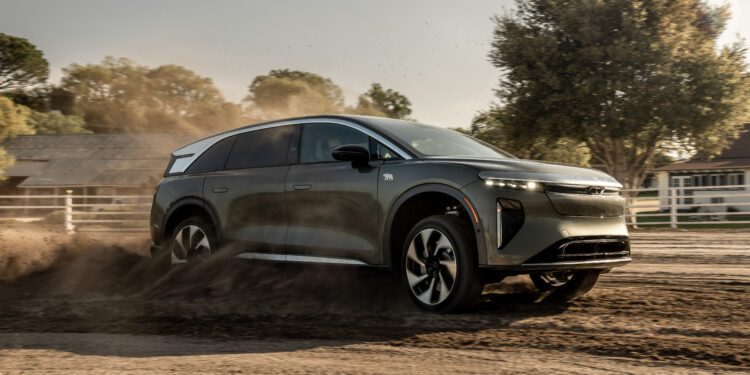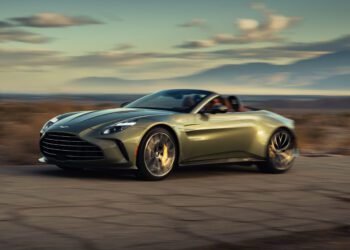We can argue forever about what exactly was the world’s first luxury performance SUV, but I make the case that the Mercedes-Benz ML55 AMG of the early 2000s brought the concept to life. Powered by a 5.4-liter V8 developing 342 horsepower, it represented the first attempt to meld three opposing personas: a practical SUV, a luxury item, and a performance car.
In the intervening 25 years, technological advancements have allowed the performance luxury SUV to flourish. What these machines can now do from a speed perspective, whether talking about those from BMW’s M division or even the reluctant entrant that is the Ferrari Purosangue, the super SUV concept has evolved far beyond what anyone could’ve envisioned at the turn of the century.
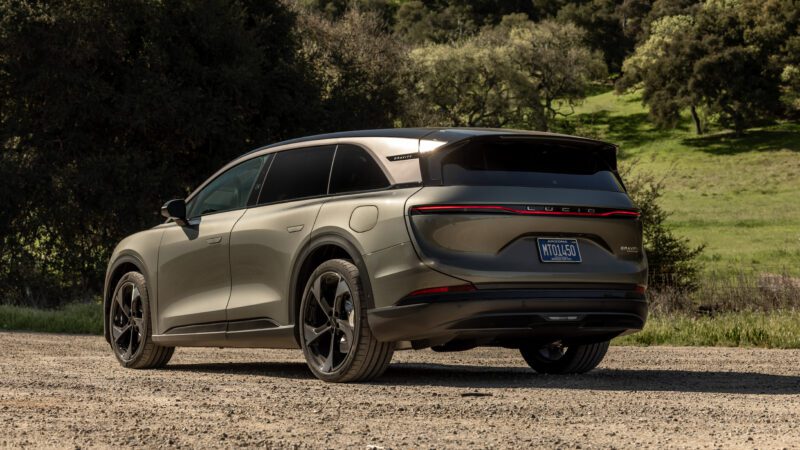
The 2026 Lucid Gravity Grand Touring, the brand’s first SUV, isn’t outwardly super. The carmaker doesn’t plan to market it primarily as a performance model like its $249,000 Air Sapphire. Instead, the $94,900 Grand Touring is merely an introduction to the Lucid SUV, with a less expensive $79,900 Touring trim due to arrive later this year and more powerful variants to follow.
Yet, while the Gravity might be Lucid’s first attempt at building a high-riding family hauler, my first drive through the twisting mountain roads of Los Olivos, CA, and a few laps of a private dirt track prove that while it may not outwardly be a luxury performance SUV, it manages to blend these opposing personas better than most.
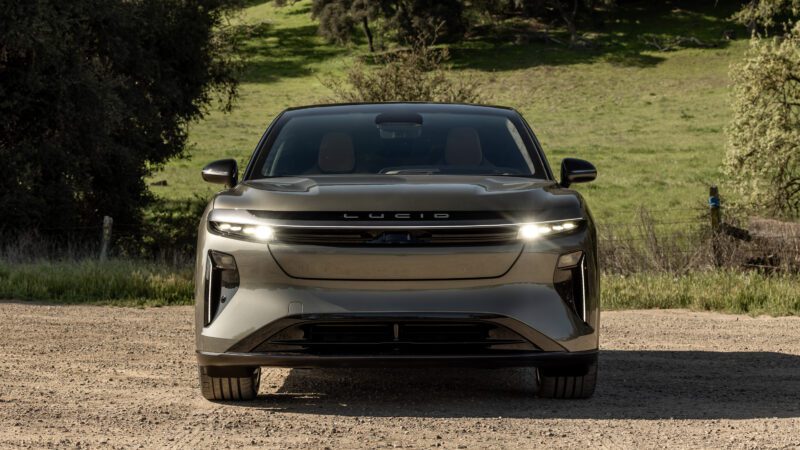
A little smack talk at a new car launch is to be expected, but Lucid doesn’t waste time mincing words. Rather than taking jabs at “our competitors” on a presentation and only vaguely alluding to what those rivals might be, the California-based brand brought out a Cadillac Escalade IQ, a BMW X7, a Rivian R1S, and a Mercedes-Benz EQS SUV. If you’re wondering where the Tesla Model X is, it’s MIA.
Still, rather than tell us that the Gravity has a smaller turning radius than its competitors thanks to its rear-axle steering system, it had us try them all back to back to experience it for ourselves. Lucid’s latest completes a turn in as little as 38 feet, compared to the IQ’s 39.4-ft figure and the R1S’s 41.3-ft radius.
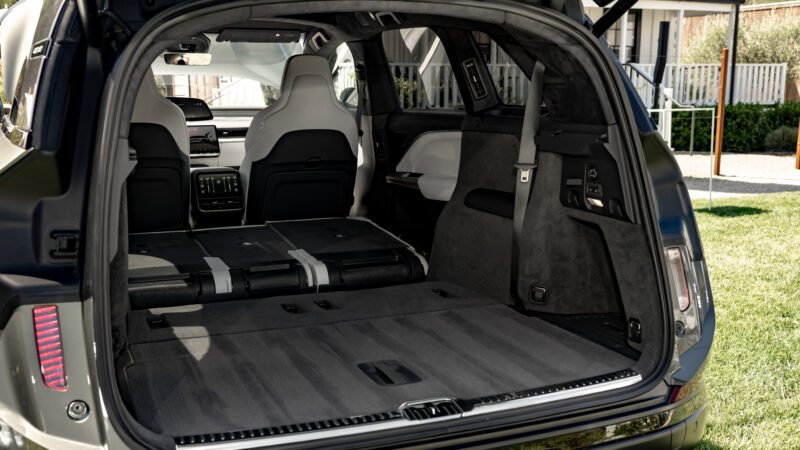
It’s a similar story when showcasing the Gravity’s storage space. Its five-seater configuration offers 120 cubic feet with its rear seats folded. This also figure takes into consideration the Lucid’s front storage compartment. Step up to the seven-seater, and that figure drops to 114.3 cu-ft, which is still enough to beat the Mercedes-Benz, the Rivian, the missing Tesla, and the BMW.
Only the massive Cadillac Escalade IQ comes close with its 119.1 cu-ft figure, which it also achieves with all seats folded. However, the Gravity matches its seating and storage space while being 26 inches shorter and four inches narrower, with a roofline that’s 11 inches lower. The real elephant in the room is the Caddy’s 9,134-pound curb weight, a staggering 3,230 lb more than the five-seater Gravity’s 5,904-lb figure (6,048 lb for the seven-seater).
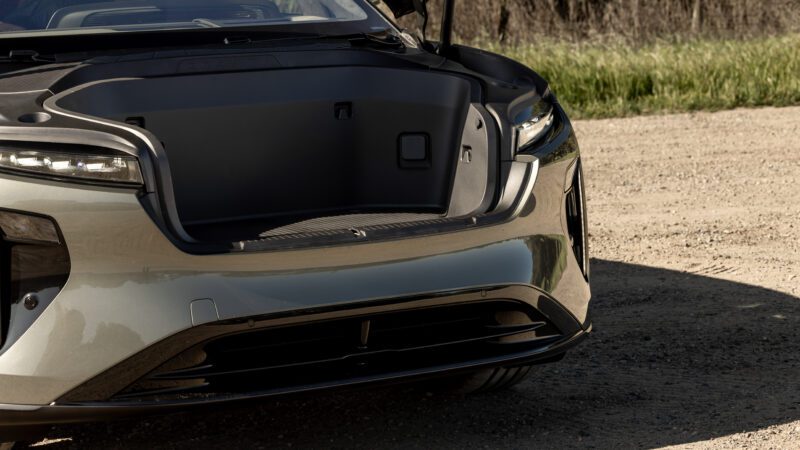
Although this SUV shares structural components with its sedan sibling, it incorporates plenty of new hardware, such as its battery pack, electric motors, charging system, and thermal system.
In a best-case scenario, a Gravity with seating for five equipped with staggered 20 and 21-inch wheels covers an EPA-estimated 450 miles, made possible by its 123-kilowatt-hour battery pack. The Grand Touring incorporates a 926-volt system that allows it to fast charge at up to 400 kilowatts. Equipped with a new NACS port with access to the broader network via adapters, the Gravity will charge up to 225 kW hooked to Tesla v3 hardware. At max speed, it’ll gain 200 miles of range in just over 10 minutes.

With ample seating and storage space and some of the best range/charging figures in its class, that’s the practical SUV persona covered. But what about luxury?
This $94,900 Lucid Gravity Grand Touring is the only trim available, at least for now. A $79,900 Touring model is due to follow later this year, and a Dream Edition with a rumored over 1,000 hp is expected soon after to hold the spot of the range-topping model, at least until a Sapphire-like trim arrives. As such, we’re looking at what’ll eventually be a mid-level version of the Gravity as its lineup expands.
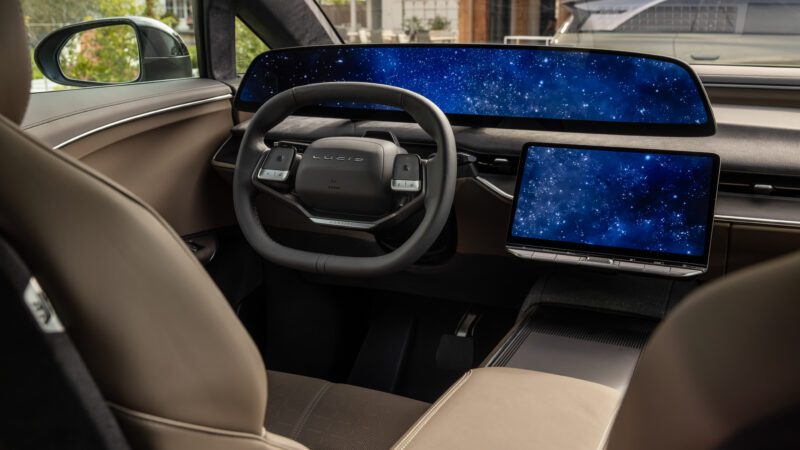
Still, while the Air leaned heavily into a screen-dense layout, the Gravity doubles down with a massive 6K-resolution OLED 34-inch central display that combines the driver’s instrument cluster and this car’s central infotainment screen. A smaller 11-inch HD OLED screen lives on the dashboard and incorporates physical switches for the controls you interact with most, such as this car’s A/C settings. A third seven-inch screen offers climate adjustment for those in the second row.
A cluster of screens isn’t necessarily synonymous with luxury, see the Bugatti Tourbillon and the lengths it goes to avoid them. However, for such a vehicle defined by its software, they’re essential to the experience the Lucid Gravity Grand Touring aims to deliver.

As I settle behind its squared-off wheel for the first time, a decision made so you have an unobstructed view of the main display, it’s all a bit overwhelming. It takes a few minutes to find where this SUV’s controls and adjustments hide, especially as they differ entirely from competitors. However, this foreignness creates the sense that you’re not driving just another luxury SUV from established brands like BMW, Mercedes-Benz, and Audi. The Gravity feels fresh in a segment that’s gone stale by closely copying each other’s homework.
There’s plenty to like from a materials standpoint as well. At launch, the Lucid Gravity Grand Touring is available with four pre-configured interior themes modeled after various regions of the Californian outdoors. Build quality feels excellent, and the cabin remains nicely isolated from excess wind and road noise at higher speeds. However, don’t expect vibrant color options to come any time soon. It’s a similar story when considering this car’s exterior palette, which is decidedly muted, with the best of the bunch being the Aurora Green shade my tester wears.

As groundbreaking as the Gravity is in terms of technology and its packaging, I suspect its exterior design will be too polarizing for the traditional luxury SUV buyer. While Lucid undoubtedly primarily targets a tech-forward customer, it needs to move units, which means also converting the Range Rover and G-Wagen crowd. And while the carmaker did make an effort to adorn this SUV with a sleek aesthetic, the Gravity suffers from minivan-like proportions, a vibe that doesn’t scream “luxury item.”
However, if you’re into it, the Lucid Gravity Grand Touring makes up ground with its three-chamber air suspension, offered as part of the $2,900 Dynamic Handling Package. It rises to provide up to 9.3 inches of ground clearance in its highest setting, nearly matching a Mercedes-Benz G550. In its sportiest setting, it’ll squat down to 5.2 inches to better match the handling characteristics of the Air sedan.
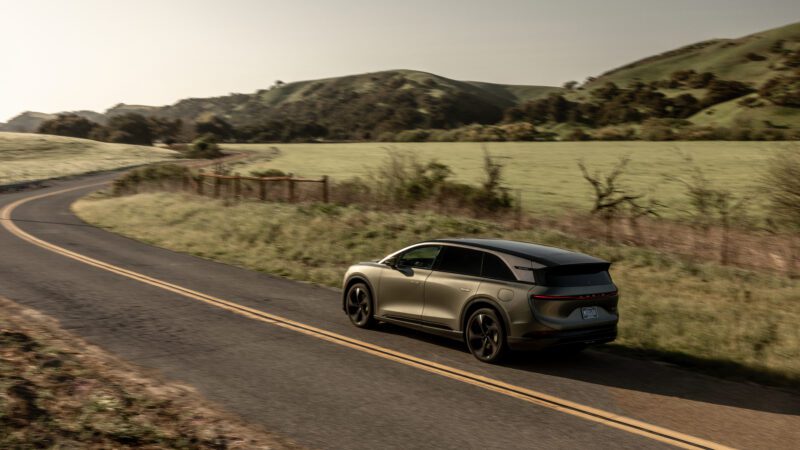
In the softest Smooth mode, it rides beautifully, effortlessly soaking up road imperfections while transmitting virtually no harshness to its passengers over rougher road surfaces. Paired with a well-isolated cabin, the Gravity is practically faultless if a luxury driving experience is what you’re after.
For those who want more, however, the Gravity has a final ace: its ability to morph into an actual performance vehicle. As difficult as that might be to believe now that you’ve learned how much tech, space, and weight is packed into this three-row SUV, a drive on a winding mountain road chasing Lucid’s Senior Director of Chassis & Vehicle Dynamic Engineering, David Lickfold, proved that not even a $249,000 Air Sapphire with 1,234 hp can leave the Gravity behind.
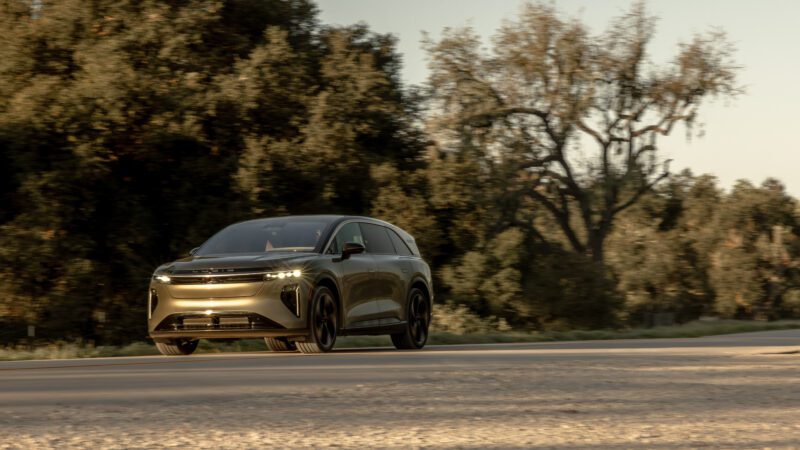
This becomes more believable as you learn that the Lucid Gravity Grand Touring develops 828 hp and 909 pound-feet of torque, split between two electric motors that send that power to all four wheels. Flat out, this near 6,000-lb SUV sprints to 60 mph in 3.4 seconds, besting even a rear-drive Lamborghini Huracan EVO Spyder.
Alongside its air suspension, which drops in the middle Swift setting and truly squats in the most aggressive Sprint mode, the Gravity gets its stopping power from six-piston Brembo brakes up front with a four-piston set in the rear. It’ll torque vector using its brakes and puts the power down via Lucid’s in-house developed traction control system.
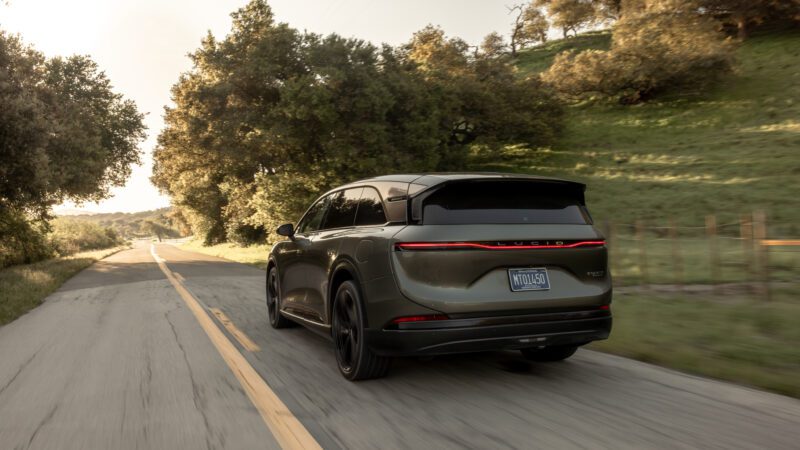
On a back road, its straight-line performance is dramatic, as expected from most EVs. What is surprising, however, is just how well the Lucid Gravity Grand Touring tackles the bends. It changes direction like something that weighs 1,000 fewer pounds. Simultaneously, its steering, despite being electrically assisted, is precise, quick, and even picks up a fair bit of weight under load. It’s a feat no BMW M car, Audi RS product, or any of AMG’s latest seem to match. It’s Porsche-like in its tuning, which, as far as electric steering goes, is the best in the business.
Because Lucid allows you to adjust your regenerative braking settings independently from your drive mode, you can fine-tune how much you want to help this SUV’s brakes when the road starts to wind. After a few minutes of running at a decent pace with no regen enabled, however, I did feel the brakes begin to struggle, such are the limitations of a nearly 6,000-lb vehicle on a mountain road.

While the Gravity’s ride quality suffers in the top Sprint setting, it pays dividends regarding backroad performance. It’s stable at speed and effortlessly settles its weight as you transition from bend to bend. Towards the end of my time on the twisty road, as I approached the final stop of the day, I was left feeling that a family SUV shouldn’t be this quick in a straight line, so agile in the bends, or so engaging to drive, yet the Gravity manages it.
Although not yet available, Lucid plans to offer a dedicated off-road mode for the Gravity as part of a software update to further enhance this SUV’s capabilities. For now, however, with a private track at my disposal and a prototype version of this drive setting, a quick run on dirt quickly morphed into an impromptu drift session. Lucid’s engineers had mentioned that the Gravity has a rear-biased power distribution. Still, here it’s evident as this family hauler kicks up clouds of dirt, hangs its tail out, and, with plenty of power, reaches extreme angles while sideways.
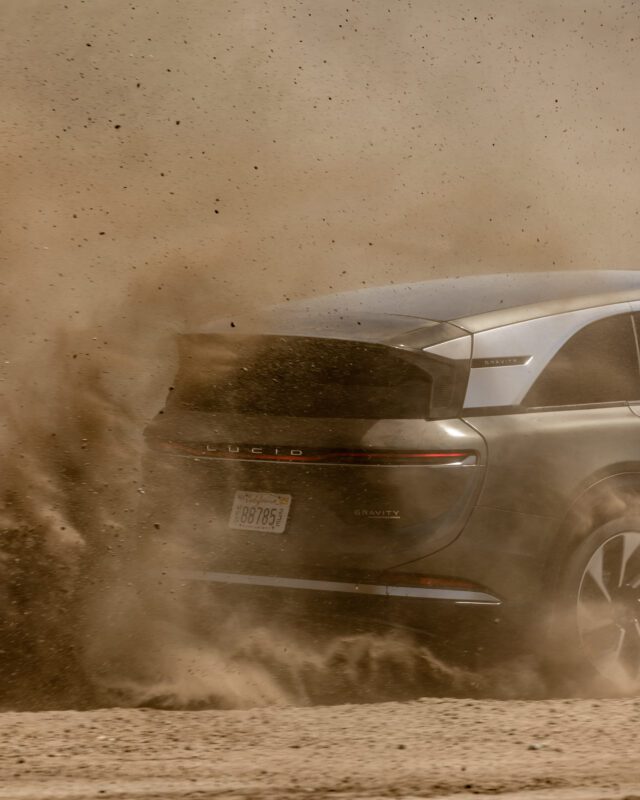
Its quick steering comes into play, allowing you to make quick corrections while getting a clear sense of exactly where its front wheels point at any given moment. Again, the feeling that an SUV shouldn’t be this athletic or this exciting to drive creeps in again. Consider the Gravity’s sporting credentials confirmed.
As you likely picked up in the earlier portions of this piece, the Lucid Gravity Grand Touring is a technological powerhouse, one the carmaker aims to improve through regular updates. From an electric family SUV perspective, Gravity excels thanks to its segment-leading storage and passenger space alongside its excellent range and electric efficiency.
If you see it as a luxury item, Lucid’s first SUV impresses with its tech-filled cabin, excellent material choices, and well-isolated cabin. Paired with a plush air suspension setup, the resulting driving experience feels luxurious, even if its minivan-like looks don’t quite reinforce the feeling.

However, what’s most shocking is how genuinely sporty the Grand Touring manages to be. Its weight and size make it tremendously quick, exciting to drive, and outrageously capable. It feels like a proper performance vehicle in a way that most competitors don’t.
The Gravity manages to split its personalities in ways the ML55 AMG that kicked off the segment could only dream of. Lucid’s second act doesn’t just show how far the performance SUV has come; it enters the space ready to lead it.

